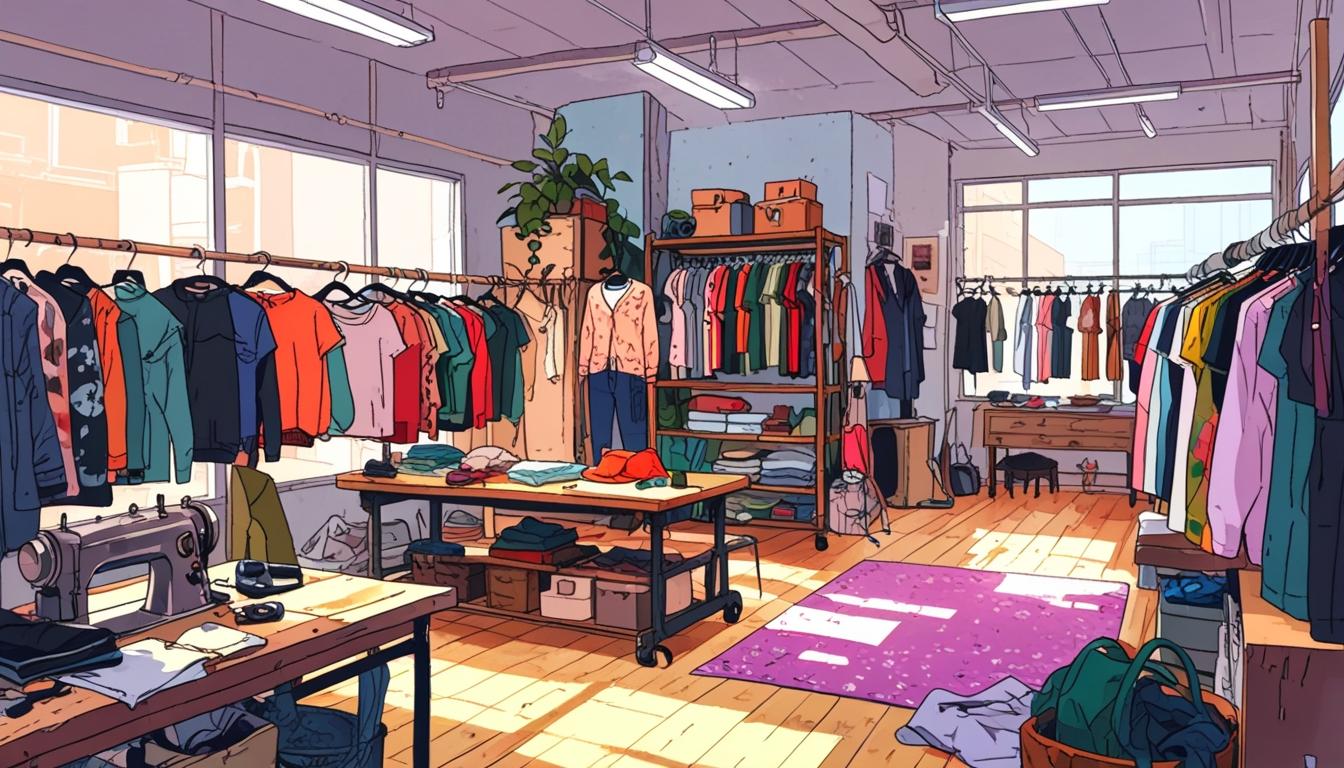A report from WRAP reveals the substantial environmental benefits of circular business models, including resale and repair, in reducing clothing consumption.
A recent report from WRAP, an environmental action NGO, highlights the impact of circular business models in the clothing industry, focusing specifically on the growing trends of resale and repair. The report, titled “Displacement Rates Untangled,” reveals how these models can significantly reduce the purchase of new clothing, which is particularly pertinent as the UK was noted to be the fourth highest consumer of clothing globally in 2024, trailing behind the USA, China, and India.
In her remarks, Harriet Lamb, CEO of WRAP, emphasized the dual benefits of preloved clothing, stating, “Our research shows that buying preloved both satisfies our desire for clothes, for something new-to-us, and means we don’t buy so many brand-new items.” She further pointed out that this research established a method for measuring the environmental advantages of various circular business models, including repair services, for the first time. “I encourage companies to adopt this new technique – customers are looking to them for new services like repair and renting,” she added.
The report draws attention to the substantial environmental challenges associated with the clothing industry. For instance, the UN Environment Programme has estimated that clothing is responsible for approximately 10% of global carbon emissions and is the second-largest consumer of water, ahead of all international flights and maritime shipping combined. This environmental footprint is exacerbated by rising production and instances of overconsumption, as seen from the doubling of worldwide clothing production between 2000 and 2015.
To address this issue, WRAP collaborated with notable players in the preloved and repair market, such as Depop, eBay, Vestiaire Collective, The Seam, SOJO, and the brand Finisterre, to evaluate how these practices could displace new clothing sales. The study’s findings indicate that for every five items repaired, approximately four new items are not bought, resulting in a displacement rate of 82.2% for repairs. Similarly, purchasing five second-hand items can prevent three new items from being purchased, yielding a 64.6% displacement rate for resale.
Lamb articulated the significance of these findings, asserting, “There’s nothing better than finding a bargain online, or in your local charity shop. Our data now quantifies the big environmental savings from preloved and repair.” She emphasized that embracing circular living not only lowers costs for consumers but also mitigates the environmental impact of their choices.
The analysis within the report quantifies the environmental savings associated with opting for second-hand items versus new ones. For instance, buying a second-hand pair of jeans could save over 30kg of CO2 equivalent emissions, comparable to making 600 cups of tea. A pair of second-hand trainers could save around 12kg CO2e, equating to almost ten days of streaming on-demand television. Additionally, repairing a cotton t-shirt can save over 7.5kg CO2e—equivalent to 25 hours of ironing—while mending a wool jumper can prevent over 16kg CO2e emissions, akin to keeping a standard light bulb lit for over 50 days.
The findings were presented at WRAP’s Textiles 2030 annual Circular Summit, dedicated to signatories of the UK’s industry-wide voluntary agreement addressing waste, water stress, and emissions within the textile sector. Moving forward, WRAP plans to introduce a new set of Circular Living Standards later this year, starting with standards for preloved clothing.
As interests in sustainable fashion continue to grow, WRAP’s report underscores the potential of circular business models to reshape consumer behavior and mitigate the environmental costs of the clothing industry. The research not only sets important benchmarks for the industry but also encourages wider adoption of sustainable practices among businesses of various sizes.
Source: Noah Wire Services




